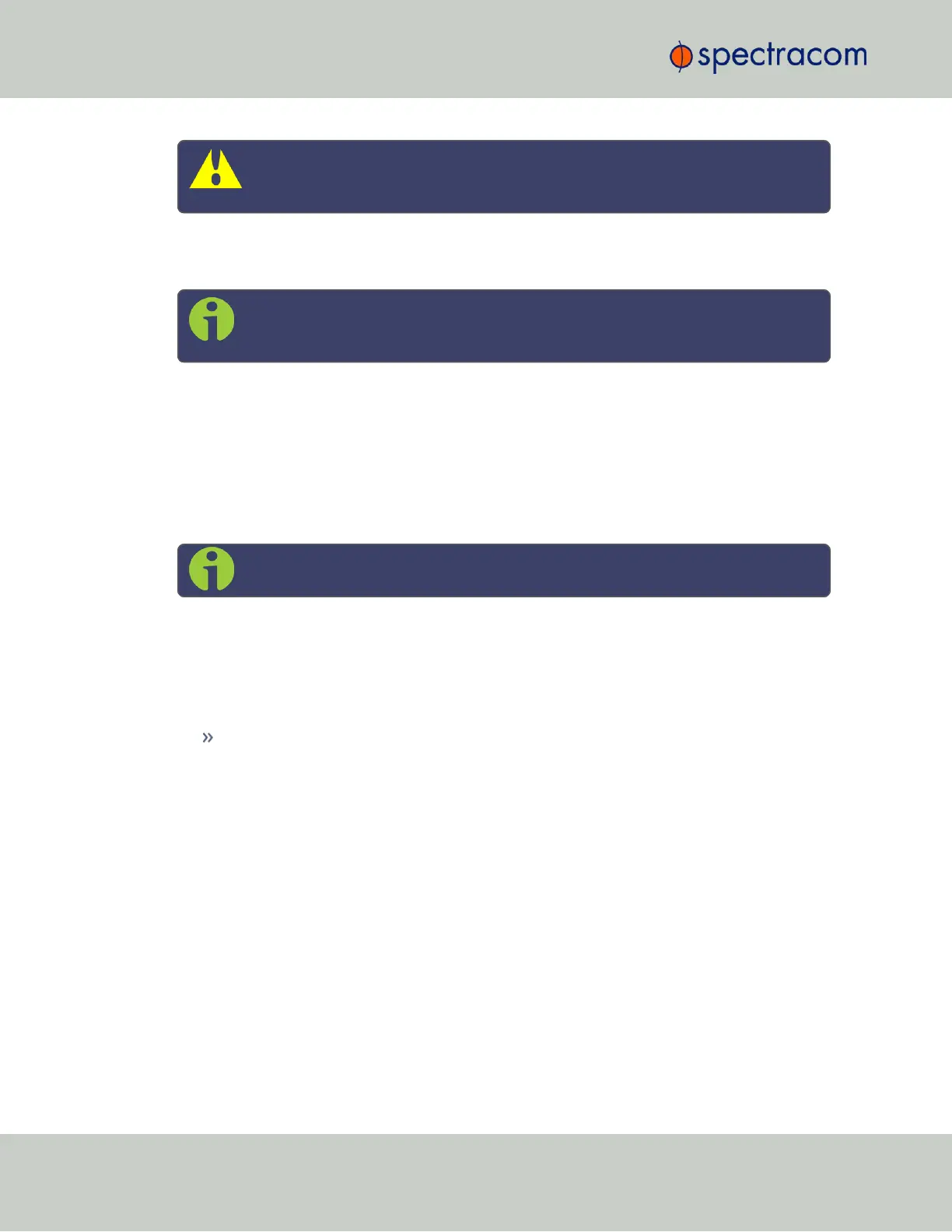Caution: Do NOT use GLONASS when operating SecureSync as an A-GNSS
server, since this will likely crash the A-GNSS software.
Based on accessible and valid GNSS data, SecureSync generates its own ephemeris and
almanac data, and stores it in RINEX files and YUMA files, respectively.
Note: RINEX files (ephemeris data) must be updated no later than every 2 hours,
because the ephemeris data is valid for 4 hours.
Note that you can specify for a Trimble RES-SMT GG receiver how often the RINEX3 data is
updated ("Generate Rinex File Every ... second"). This is not needed for u-blox M8T receivers
since their data will be updated as needed automatically.
You can also determine how often, or at what time each day the YUMA almanac files will be
created. Also, you can assign a 4-character Station Name to be used in the files generated by
this unit so that their location can later be identified. Under Record Duration, you can determine
after how many days the history files will be overwritten.
Note: YUMA files (almanac data) are valid for day.
The files can be remotely accessed via the /pub path on the SecureSync or via the mapped
drive.
Confirming that the A-GPS RINEX Server License is installed on your unit
Navigate to TOOLS > SYSTEM: Upgrade/Backup. In the System Configuration panel the
option OPT-AGP A-GPS RINEX Server must be present.
Activating the A-GPS RINEX Server License functionality
If an A-GPS RINEX Server License is installed on your unit, you have to activate it:
1.
Navigate to INTERFACES > GNSS Reference, and click the GEAR button next to GNSS 0.
2.
Inthe A-GPS panel, check the box Generate RINEX/YUMA Files and populate the fol-
lowing options:
208
CHAPTER 3 • SecureSync User Reference Guide Rev. 26
3.3 Managing References

